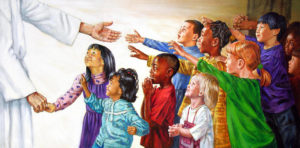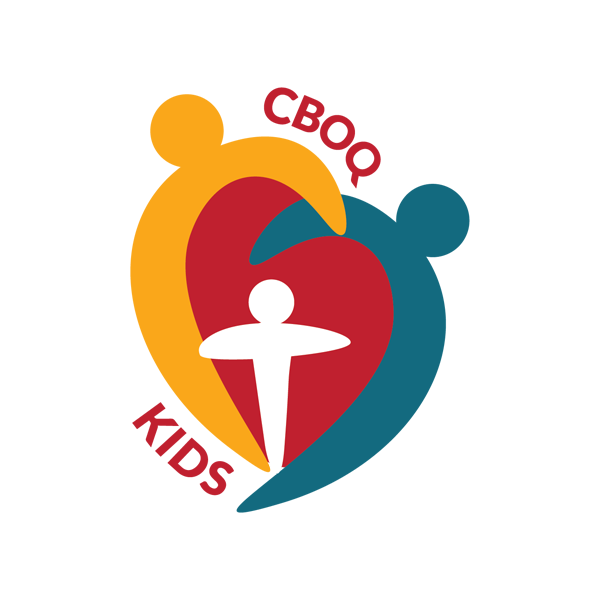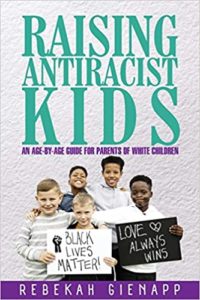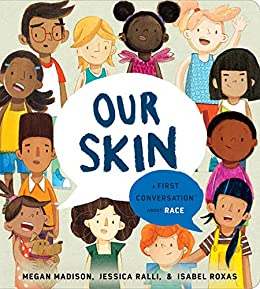
Anti-Racist Children and Family Ministry
“What’s the problem with being “not racist”? It is a claim that signifies neutrality: “I am not a racist, but neither am I aggressively against racism.” But there is no neutrality in the racism struggle. The opposite of “racist” isn’t “not racist.” It is “antiracist.” Ibram X. Kendi How To Be An Antiracist
Why do we even need to talk about race in our children’s ministry? Perhaps you have noticed an increased focus on the topic of racism but have questions of how this is important for children’s ministry. I invite you to first read this article from Henry Zonio before going any further. You will also find a helpful webinar that he facilitated with a panel as well as some resource suggestions from Ministry to Children on how children’s ministry can respond to the sin of racism here.
Now that you are convinced we must start talking about racism in children’s ministry, you many have questions like, What does it mean to be anti-racist in our children and family ministries? What steps can be taken to become more aware of racism in your children’s programming, resources or events? How can ministry leaders support and resource parents that want to become anti-racist in their parenting?
On this page you will find suggestions, ideas and resources to begin shifting your children and family ministry towards an anti-racist posture. It is important to note that the move towards anti-racism is an ongoing journey, not a one time action. I would love to join you and your community on your journey towards anti-racism and also hear what you are discovering as you intentionally make this shift. Please email Tanya with any feedback, comments or suggestions you have or if you are looking for more specific resources on this topic.
Beyond Colourblindness
 In order to truly step into being anti-racist in children and family ministry, it is important to move beyond colourblindness. It seems safe to assume that most of us do not intentionally want to hurt or make fun of anyone else. It also seems safe to assume that most of us likely teach messages of equality, and as Genesis teaches us, that God has created us all in his image and likeness. While it is true and so important to emphasize these themes of equality, to begin the work of anti-racism, we must move beyond these messages and begin to address the reality that in our racist culture, not everyone is treated equally. It is important to move into direct discussion about race, beginning within even our nursery and preschool ministries! How? The following list are some simple ways to get started without even saying a word!
In order to truly step into being anti-racist in children and family ministry, it is important to move beyond colourblindness. It seems safe to assume that most of us do not intentionally want to hurt or make fun of anyone else. It also seems safe to assume that most of us likely teach messages of equality, and as Genesis teaches us, that God has created us all in his image and likeness. While it is true and so important to emphasize these themes of equality, to begin the work of anti-racism, we must move beyond these messages and begin to address the reality that in our racist culture, not everyone is treated equally. It is important to move into direct discussion about race, beginning within even our nursery and preschool ministries! How? The following list are some simple ways to get started without even saying a word!
- Fill your children’s/church library or sunday school classroom with children’s bible storybooks and other books that both depict people of various colours and are written by people of colour. Check out this list for a few recommended resources.
- Display and use visuals that reflect different colours and cultures. Pay attention to how Jesus is portrayed.
- Purchase crayons that include a variety of different flesh tone colours, like these ‘Colors of the World’ crayons from Crayola.
- Be aware of the light/dark imagery that is used and the messages that communicates to children. (ie. white is good, black is bad)
- Pay attention to the themes and decorations you use and the cultural stereotypes it introduces or reinforces. (ie. Hawaiian luau)
Engaging in Anti-Racist work
Read 10 Things Your Ministry Can Do To Help Stop Racism Before It Starts
Once you move beyond colourblindness and ensure a diversity of visual representation such as the examples listed above, it is important to begin using language and initiating an open door for conversation about race within sunday school and bible story discussions. Christine V Hides, has a great suggestion in one of her blog posts of a simple way to allow space for kids to acknowledge and discuss race as you begin a bible story reading. She suggests,
Beginning can be as simple as saying before you begin to read from a children’s bible, “one of the things I like most about this Bible is that the people are not all white. Look, Jesus has brown skin like he would have had in real life.”
Another way to create safe space in your children’s ministry to discuss issues of race and racism, is to pay attention to the curriculum you are using and the Bible story you are teaching. There are many stories in Scripture that lend themselves very easily to conversations of race, that are often ignored. For example, in the story of the Good Samaritan the focus is often reduced to simply a moral lesson. In a similar way, as you pay attention to the books and curriculum evaluate them based on these 2 questions:
-
Does this uphold or fight systemic racism?
-
How does it portray Jesus and other biblical figures to kids?
As you analyze material you may begin to notice racist stereotypes written in. For example, read this article about Group’s 2019 Roar VBS curriculum. While you may need to make changes in the materials you are using, I would like to suggest that you take the time to write to the publishing company/curriculum writers to point out the racism you see as well as the missed opportunities to include discussion of race, prejudice and injustice within the biblical narrative. It is time to demand more from those that are creating resources to teach our children. At the same time, we cannot wait for all the changes that need to be made to children’s materials and so it may require some work on your part to edit and adapt lessons as needed. There have also been some resources created to specifically address themes of racism. Check out the follow 2 free resources:
- The Gospel in Color. This is a 4-part Bible series for kids that corresponds with the four chapters in the book, The Gospel in Color: A Theology of Racial Reconciliation for Kids by Patrol Books
- Deep Blue Life Faith & Culture: Anti-Racism. This is a 3-part Bible study from Cokesbury that addresses the themes of prejudice and stereotypes, curiosity and empathy; and colours and cultures.
It is also important to invest time in training your sunday school volunteers.
It is worth reading the Government of Canada’s Anti-Racism Strategy and this article from MacLean’s about Canada’s Indigenous community.
Resourcing/Support For At Home
Along with shifting your church ministry to a posture of anti-racism, it is important to invest time in equipping, resourcing and supporting families and caregivers to engage in anti-racism. Following is a list of books and resources for families to begin conversations of race from the toddler years and up.
Books for Adults to Read
Click on the image for more details on this book and why I recommend it.
Books to read with kids
Check out this list of 20 picture books for kids 12 and under from Embrace Race.
This book is aimed at 2-5 year olds and is a great way to begin conversations about race and justice.
This book provides a clear description of what racism is, how it makes people feel when they experience it, and how to spot it when it happens. It is aimed at kids ages 5-9. Check out the video for the authour reading.
Articles to Read
This article from Embrace Race has 10 Tips for talking with kids about race.
This article from Parents Canada provides some helpful tips about how to teach racial acceptance.
This article from Today’s Parent is a good article for an age by age guide in teaching kids about racism.
This article is another helpful article about why it is never too young to start talking about racism and includes age by age suggestions and resources.
This article from Common Sense Media is helpful for tips on how to use media to talk to kids about racism.
Websites/Blogs to Check out



